Introduction
The Pig Indicator is a key component in the process of pipeline cleaning and inspection. They are not only useful to monitor the position of the pig but also to ensure that the pipeline cleaning operation is carried out smoothly. These indicators are usually installed at key points in the pig operation. Such as the start, bend, branch, and end of the pipe. When the pig passes through these points, the pig indicator provides immediate feedback. It gives the operator a clear signal that the pig has passed through the specific section of the pipe.
Working Principles of Pig Indicator
The working principle of these indicators is relatively simple: As the pig passes through the pipe, it comes into contact with a trigger in the indicator. This trigger action releases a mechanical device, usually a spring device, which activates a signal. These signals can be visual, such as a pop-up flag. It can also be auditory, like a ringing bell, an electronic signal, or even a signal sent to a remote monitoring system.
In addition to the monitoring function, the pass ball indicator also helps to protect the safety of the pipe. They can detect abnormal stagnation in the pig over time, which may be caused by blockage or damage inside the pipe. By identifying these issues promptly, operators can quickly take action to prevent problems from worsening.
EMT pig indicators can feature pressure sensors and wireless capabilities. It enables real-time data transmission to control rooms or mobile devices. This allows operators to monitor the condition of the pipeline in real-time, even in remote or hard-to-reach areas.
| Types d’indicateurs | Un | B | C | D |
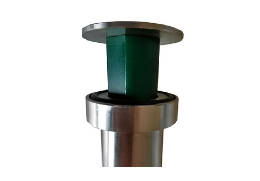 | 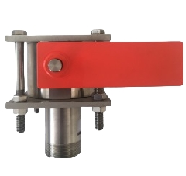 | 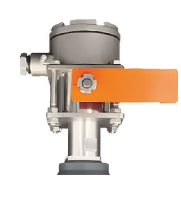 |  | |
| Type intrusif | Intrusif | Intrusif | Intrusif | Non intrusif |
| Caractéristiques de l’indicateur | Type de bouton-pression | Drapeau de réinitialisation manuelle | Drapeau de réinitialisation manuelle combiné à des signaux électriques | Affichage de la date et de l’heure combiné à des signaux électriques |
Detailed Overview of Pig Indicator Types
- Type A – Intrusive with Popper Type Indicator
This version reaches into the pipeline and pops a flag when a pig passes. Operators can see the flag from a distance, allowing for quick visual confirmation. - Type B – Intrusive with Manual Reset Flag
After detecting a pig, this indicator raises a flag that operators must manually reset. It’s simple and reliable, offering direct, hands-on monitoring. - Type C – Intrusive with Dual Feedback
Combining a manual flag and electrical signals, this indicator provides two types of alerts. It ensures both local and remote awareness of a pig’s passage. - Type D – Non-intrusive with Advanced Signals
This type stays outside the pipeline and uses sensors to display the time and date of a pig’s transit, with electrical signals for remote tracking. It’s ideal for operators who prefer non-invasive methods and require detailed passage records.
Description
A pig indicator detects the pig’s passage in the pipeline during the pig-running process, which we usually call a signaler.
You permanently install the intrusive through-fitting (O-threaded or flanged mounting) on the pipe. It works with any pig type without requiring special attachments. Typically, it includes a probe that extends into the pipe and mechanically activates when the pig passes.
| Nom | Indicateur de porc |
| Connexion | Raccord à bride |
| Longueur du corps de la prise | 200 millimètres |
| Température de fonctionnement | -20 ~ 120 °C / Répondre aux exigences du client |
| NACE MR 01-75 | Oui |
| Protection contre les infiltrations | IP65/IP66 |
| Classe antidéflagrante | ExdII. BT4 |
| Retirer sous pression | Non |
| Type de déclencheur | Bidirectionnel/Unidirectionnel |
| Longueur ajustable | 10mm/20mm/0mm |
| Matériau de la pièce interne | 316SS/DSS/INCONEL |
| Profondeur de l’insert | 21 mm (Bi)/13 mm (Uni) |
| Matériau de la bride/du corps | PTFE-coated A105N/304SS/316SS/DSS/INCONEL (as per MR) |
Frequently Asked Questions About Intrusive Pig Indicator
What is an invasive pig indicator?
An intrusive pigging indicator is a mechanical device. It has a probe that extends inside the pipe to detect the passage of a pipe inspection instrument, commonly referred to as a “pig.”
How does an intrusive pig indicator work?
It works by inserting a probe into a tube; When a pig passes by, it physically reacts with the probe. This interaction triggers a mechanical signal, which could be a visual sign, a ring, or an electronic alarm indicating the pig’s presence.
Can invasive pig indicators be used on all types of pigs?
Yes, manufacturers design them to work with all pig types, including cleaning pigs, inspection pigs, and sealing pigs. They do not need special modifications or additions to the pigs.
Are intrusive pig indicators safe in all pipeline conditions?
Although generally safe, their safety depends on the pipeline’s specific conditions, such as pressure, temperature, and transport material. It’s crucial to choose indicators appropriate for the pipeline’s operational conditions.
Can intrusive pig indicators provide real-time monitoring?
Yes, modern intrusive pig indicators come equipped with advanced features like pressure sensors and wireless communication. These features allow for real-time updates to remote monitoring systems, enhancing pig tracking and immediate pipeline condition assessment.
Conclusion
In summary, intrusive pig indicators are essential for safe, efficient pipeline maintenance. Their mechanical design easily detects various pig types, ensuring versatility. Operators must choose devices that suit the pipeline’s specific conditions. Advanced indicators now incorporate pressure sensors and wireless technology, boosting functionality. These upgrades enable real-time data transmission, critical for prompt issue resolution. As technology progresses, pig indicators will continue to enhance pipeline safety and efficiency.


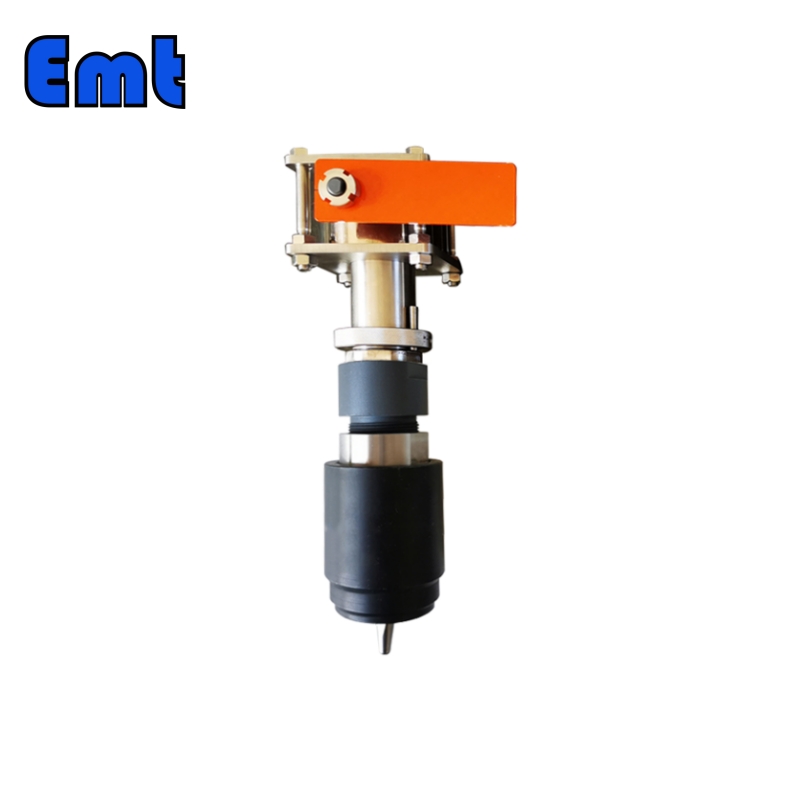
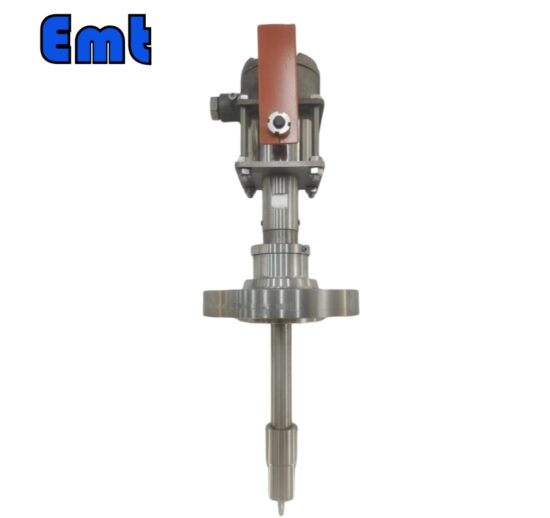
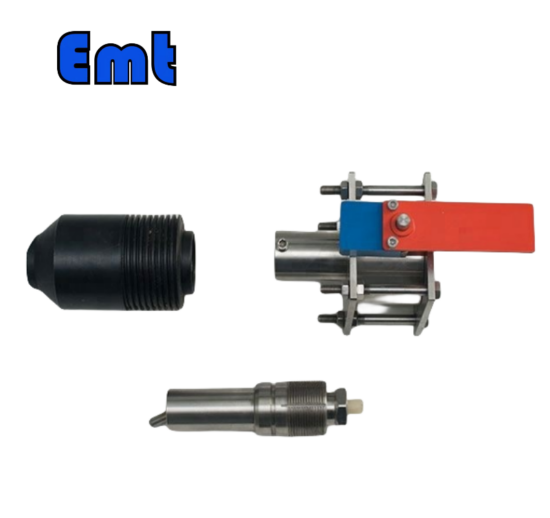
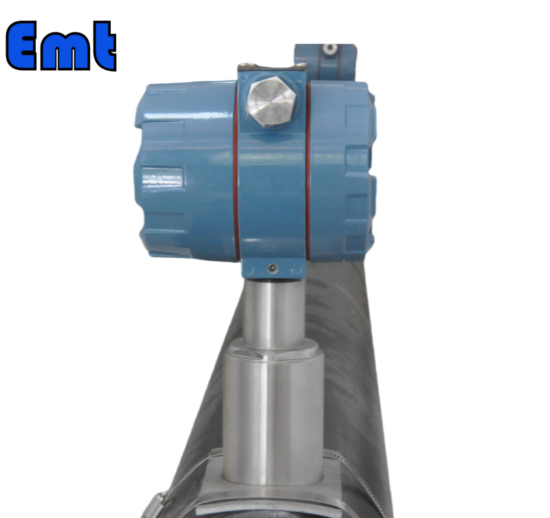
Il n’y a pas encore d’avis.